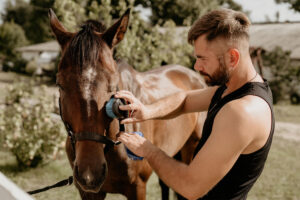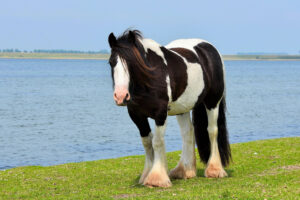
The skeletal structure of horses is a captivating topic that unveils remarkable insights into their adaptations and graceful movements. With over 205 bones, horses possess a highly specialized and intricate skeletal system that enables them to excel in various activities.
One intriguing aspect of their skeletal structure is the uniquely adapted leg bones. These elongated bones, such as the cannon bones, provide horses with the necessary leverage and strength to achieve remarkable speed and agility. The elongated and flexible neck is another prominent feature, comprised of seven vertebrae, which not only adds elegance to their movements but also helps maintain balance while in motion.
The foot structure of horses is also a fascinating adaptation. Each hoof is supported by a single digit, and the hoof wall acts as a protective shield for the sensitive internal structures. The skeletal support within the hoof plays a crucial role in the overall stability and soundness of horses.
The spine of horses is well-designed to distribute weight and absorb the impact of their movements. With more than 50 vertebrae, the backbone is divided into three main sections: cervical (neck), thoracic (chest), and lumbar (loin). This well-structured spine allows horses to move with grace and efficiency.
Horses possess an expansive ribcage that safeguards vital organs such as the heart and lungs. Unlike humans, horses have floating ribs that lack attachment to the sternum. This unique adaptation offers enhanced flexibility and contributes to their ability to expand the chest cavity for efficient breathing during physical exertion.
The horse’s skull is yet another captivating element of their skeletal structure. It houses the brain, sensory organs, and teeth. With a sizable nasal cavity, horses have a keen sense of smell. Their lateral positioning of eyes provides them with a broad field of vision, although they do have blind spots directly in front and behind them.
Understanding the intricacies of a horse’s skeletal system is essential for their proper care, training, and overall well-being. By comprehending these unique adaptations, we can gain a deeper appreciation for the majesty of these magnificent creatures and ensure their optimal health and performance.
- The skeletal framework of horses is an extraordinary marvel, crafted to provide stability and facilitate their graceful movements. With a remarkable assembly of over 205 bones, horses possess a highly specialized and intricate skeletal system.
- Horses possess uniquely adapted leg bones that enhance their speed and agility. These elongated bones, including the cannon bones, grant the necessary leverage and strength, enabling horses to traverse vast distances effortlessly.
- The elongated and flexible neck is a prominent feature of a horse’s skeleton. Comprised of seven vertebrae, it not only enables them to exhibit elegance in their movements but also aids in maintaining equilibrium while in motion.
- The foot structure of horses is an interesting adaptation, as each hoof is supported by a single digit. The hoof, consisting of a tough outer layer called the hoof wall, acts as a protective shield for the sensitive internal structures. The skeletal support within the hoof plays a vital role in the overall stability and soundness of horses.
- Horses possess a well-designed spine that efficiently distributes weight and absorbs the impact of their movements. Comprising more than 50 vertebrae, the backbone is categorized into three primary sections: cervical (neck), thoracic (chest), and lumbar (loin).
- Horses possess an expansive ribcage that safeguards vital organs like the heart and lungs. Unlike humans, horses have floating ribs that lack attachment to the sternum. This unique adaptation offers enhanced flexibility and contributes to their ability to expand the chest cavity for efficient breathing during physical exertion.
- The horse’s skull presents a captivating structure, housing the brain, sensory organs, and teeth. With a sizeable nasal cavity, horses possess a keen sense of smell. Their lateral positioning of eyes grants them a broad field of vision, although they do have blind spots directly in front and behind them.
Acquiring a profound understanding of a horse’s skeletal system is crucial for their proper care, training, and overall well-being. By comprehending these exceptional adaptations, we can further appreciate and support the majestic nature of these splendid creatures.






